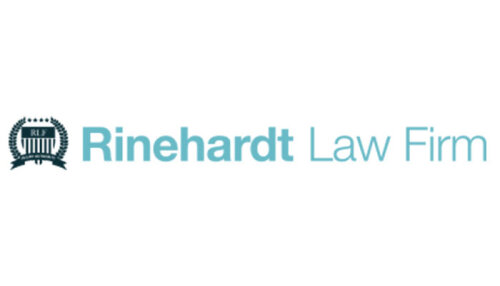Best Personal Injury Lawyers in Ontario
Share your needs with us, get contacted by law firms.
Free. Takes 2 min.
List of the best lawyers in Ontario, United States
1. About Personal Injury Law in Ontario, United States
Note: Ontario is a province in Canada, not in the United States. This guide explains Personal Injury law as it applies in Ontario, Canada. If you meant a U.S. state, please specify the location for a tailored guide.
Personal Injury law covers civil claims arising from negligence or dangerous conditions that cause physical or financial harm. In Ontario, most claims rely on common law duties created by courts, along with specific statutory frameworks. Car accidents, slip and fall injuries, medical malpractice, and product or premises liabilities are common examples. A key feature in Ontario is the two-track system for motor vehicle injuries: no-fault accident benefits plus the right to pursue a tort claim in certain circumstances.
Under provincial law, you may pursue compensation for medical expenses, lost wages, non‑economic damages such as pain and suffering, and future care costs. The process typically involves gathering medical records, proving fault or partial fault, and negotiating with insurers or pursuing a court action if necessary. For car accidents, the Statutory Accident Benefits Schedule (SABS) under the Insurance Act provides benefits regardless of fault, while a separate tort claim may be pursued for additional compensation where eligible.
“Ontario's no‑fault accident benefits are designed to provide timely medical and rehabilitation support, while tort claims address non‑economic damages and fault-based liability where applicable.”
Two important sources of Ontario law to understand are the Insurance Act and the Limitation Act. The Insurance Act governs auto insurance benefits and the SABS, which streams benefits such as medical care and attendant care. The Limitation Act sets the time limits for bringing most personal injury claims, typically two years from the date of the accident or when the injury was discovered.
For authoritative summaries of these rules, see the following official resources: Insurance Act and Statutory Accident Benefits Schedule (SABS) and the Limitations Act. These statutes establish the framework for how claims are started, what benefits are available, and what deadlines apply. Insurance Act - Statutory Accident Benefits Schedule and Limitations Act, 2002.
The guidance below focuses on Ontario practice, with practical steps for residents seeking legal advice in Personal Injury matters.
2. Why You May Need a Lawyer
Situations described below illustrate concrete, real‑world scenarios where hiring a Personal Injury lawyer in Ontario can improve your outcome. Each scenario involves careful evaluation of benefits, fault, and potential court claims.
Scenario 1: You were in a serious car crash and suffer a long recovery. You need to coordinate SABS benefits for medical care and attendant support, while also assessing a possible tort claim for pain and suffering or future care costs if you meet the catastrophic impairment threshold. An attorney can help you avoid under‑settlement with insurers and ensure future needs are funded.
Scenario 2: You slipped on a wet floor in a grocery store and sustained a broken wrist. Premises liability rules require proving the store owner owed a duty of care and failed to maintain safe conditions. A lawyer can gather incident evidence, identify responsible parties, and pursue a claim against multiple defendants if needed.
Scenario 3: A hospital error leads to a worsened condition. Medical malpractice cases involve complex standards of care and expert testimony. A solicitor can coordinate medical experts, interpret health care records, and navigate potential hospital or practitioner liability claims.
Scenario 4: You were injured by a faulty product used in daily life, such as a defective tool or appliance. Product liability claims often involve manufacturers, distributors, and retailers. A lawyer can assess product recalls, warranty coverage, and the best path to compensation.
Scenario 5: A construction site accident injures you and a third party is partially to blame. Some damages may be pursued through common law negligence, while your employment status may bring in WCB benefits. A legal professional helps determine the best mix of claim pathways.
In all scenarios, a lawyer can help with case evaluation, documentation, negotiation with insurers, and timelines for filing. They can also explain how no‑fault benefits interact with any potential fault based claims and guide you through medical‑legal assessments that affect compensation.
3. Local Laws Overview
Ontario has several key statutes that govern Personal Injury practice. The following are commonly cited by lawyers when advising clients. They describe the framework for eligibility, timelines, and the kinds of damages available.
Insurance Act and the Statutory Accident Benefits Schedule (SABS) govern auto insurance in Ontario and set out the no‑fault benefits available to injured parties. They also define the process to pursue medical, rehabilitative, and attendant care services after a motor vehicle collision. Recent updates to SABS and related auto insurance rules have impacted eligible benefits and offsets in certain cases. See the Insurance Act and SABS on the Ontario Laws site for current language: Insurance Act - Statutory Accident Benefits Schedule.
Limitations Act, 2002 sets the general time limits to bring a personal injury claim. For most claims, the limitation period is two years from the date of loss or the date you discovered the loss, with some exceptions. This Act helps determine when a claim must be filed to avoid an incurred statute of limitations bar. See: Limitations Act, 2002.
Occupiers' Liability Act imposes a duty on occupiers to ensure safe premises and to take reasonable steps to prevent injuries to those who enter their property. When a store, building, or facility owner fails to maintain safe conditions, a claim may arise under this act. See: Occupiers' Liability Act.
These statutes work together with common law tort principles and provincial regulations to shape how Personal Injury cases are investigated, litigated, and resolved in Ontario. For a broad view of Ontario statutes, see the Ontario Laws site: Laws of Ontario.
4. Frequently Asked Questions
What is a personal injury claim in Ontario?
A personal injury claim seeks compensation for injuries caused by someone else’s negligence. It blends evidence from medical records, fault analysis, and financial losses. The claim may involve no‑fault benefits and a separate tort action for damages.
How do I start a claim after a car accident in Ontario?
First, obtain medical treatment and document injuries. Report the accident to your insurer, and contact a lawyer to assess eligibility for SABS benefits and a possible tort claim. The lawyer will guide you through disclosures, investigations, and settlement negotiations.
When should I hire a Personal Injury solicitor in Ontario?
Immediately after the event is best, especially for complex cases or when insurers dispute fault or benefits. Early legal advice helps preserve evidence and ensures timely steps under the two‑track system.
Where do I file a personal injury claim in Ontario?
Most claims are filed in the Ontario Superior Court of Justice if proceeding to trial. Some smaller claims can be addressed via settlement negotiations or, in limited circumstances, Small Claims Court for certain damages steps.
Why might I need a lawyer if the insurance company offers a settlement?
Insurance offers often aim to close a case quickly and cheaply. A lawyer ensures the offer covers future medical needs, lost wages, and non‑economic damages. They also verify they are not missing long‑term care costs or future disputes.
Do I need to pay upfront for a Personal Injury lawyer in Ontario?
Most Ontario Personal Injury lawyers work on a contingency basis, meaning you pay fees only if the claim resolves. You may still be responsible for disbursements and independent medical examinations required for the case.
How much can I expect to pay in legal costs if I win a Personal Injury case?
Contingency fee arrangements commonly range from 15 to 25 percent of the gross settlement or judgment, plus disbursements. Exact percentages vary by firm and case complexity. Always confirm costs in writing before proceeding.
How long does a typical Ontario Personal Injury case take?
Simple motor vehicle or slip and fall claims may settle within 6 to 18 months. More complex cases or trials can take 2 to 3 years or longer, depending on medical proof, expert reports, and court schedules.
Do I need medical evidence for my claim?
Yes. Comprehensive medical records, statements from treating doctors, and independent medical evaluations are essential. They establish causation, severity, and future care needs.
Is there a difference between a no‑fault benefits claim and a tort claim?
Yes. No‑fault benefits are automatic for auto injuries and cover medical care, rehabilitation, and attendant care. A tort claim seeks damages for pain and suffering and other losses when fault or liability is established.
Should I settle before talking to a lawyer?
Settling before legal advice can risk under compensation. A lawyer can review the settlement, identify hidden costs, and ensure all future care needs are considered.
What happens if the claim is disputed or denied?
You can appeal or pursue a lawsuit. A Personal Injury solicitor helps gather evidence, engage medical and financial experts, and present your case for fair compensation.
5. Additional Resources
The following official sources can help you understand Personal Injury law in Ontario and related processes.
- Insurance Act (Ontario) - Justice Laws Website - Governs auto insurance and the Statutory Accident Benefits Schedule (SABS).
- Limitations Act, 2002 - Sets time limits for filing personal injury claims.
- Occupiers' Liability Act - Duties of property occupiers to keep premises safe.
In addition to statutes, the following non‑governmental resources are widely used by practitioners and the public to understand personal injury issues in Ontario.
- Legal Aid Ontario - Provides legal aid and guidance for eligible individuals in personal injury matters.
- Law Society of Ontario - Regulates lawyers and provides guidance on professional conduct and fees.
- Ontario Trial Lawyers Association - A professional association that can help connect you with qualified personal injury counsel.
6. Next Steps
- Identify a suitable lawyer with a focus on Personal Injury and experience in Ontario auto, premises, or medical malpractice claims. Start with a free consultation to assess your case.
- Gather documentation promptly, including incident reports, medical records, insurance correspondence, and any wage loss information. Create a 2‑page summary of events and injuries.
- Have your lawyer conduct a formal case assessment to determine if you should pursue SABS benefits, a tort claim, or both. Discuss potential timelines and likely costs.
- Confirm a contingency fee arrangement in writing, including disbursements and any other costs. Ensure you understand who pays for expert reports and medical exams.
- Proceed with medical treatment and follow any recommended care plans. Ongoing medical documentation strengthens your claim and supports future care needs.
- Undergo any required independent medical evaluations as advised by your attorney to establish the extent of injury and prognosis.
- Review settlement offers with your lawyer and consider the long‑term impact of damages on future care, earnings, and quality of life before accepting any settlement.
Lawzana helps you find the best lawyers and law firms in Ontario through a curated and pre-screened list of qualified legal professionals. Our platform offers rankings and detailed profiles of attorneys and law firms, allowing you to compare based on practice areas, including Personal Injury, experience, and client feedback.
Each profile includes a description of the firm's areas of practice, client reviews, team members and partners, year of establishment, spoken languages, office locations, contact information, social media presence, and any published articles or resources. Most firms on our platform speak English and are experienced in both local and international legal matters.
Get a quote from top-rated law firms in Ontario, United States — quickly, securely, and without unnecessary hassle.
Disclaimer:
The information provided on this page is for general informational purposes only and does not constitute legal advice. While we strive to ensure the accuracy and relevance of the content, legal information may change over time, and interpretations of the law can vary. You should always consult with a qualified legal professional for advice specific to your situation.
We disclaim all liability for actions taken or not taken based on the content of this page. If you believe any information is incorrect or outdated, please contact us, and we will review and update it where appropriate.









